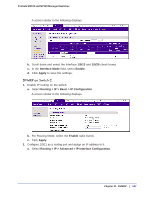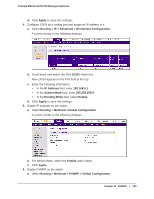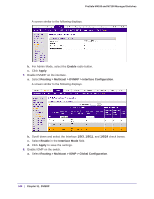Netgear M4100-26G Software Administration Manual - Page 542
Captive Portal
 |
View all Netgear M4100-26G manuals
Add to My Manuals
Save this manual to your list of manuals |
Page 542 highlights
32. Captive Portal 32 This chapter includes the following sections: • Captive Portal Configuration on page 543 • Enable Captive Portal on page 543 • Client Access, Authentication, and Control on page 545 • Block a Captive Portal Instance on page 546 • Local Authorization, Create Users and Groups on page 546 • Remote Authorization (RADIUS) User Configuration on page 548 • SSL Certificates on page 550 The captive portal feature is a software implementation that blocks clients from accessing the network until user verification has been established. You can set up verification to allow access for both guests and authenticated users. Authenticated users must be validated against a database of authorized captive portal users before access is granted. The authentication server supports both HTTP and HTTPS Web connections. In addition, you can configure captive portal to use an optional HTTP port (in support of HTTP proxy networks). If configured, this additional port is then used exclusively by captive portal. Note that this optional port is in addition to the standard HTTP port 80, which is currently being used for all other Web traffic. Captive portal for wired interfaces allows the clients directly connected to the switch to be authenticated using a captive portal mechanism before the client is given access to the network. When a wired physical port is enabled for captive portal, the port is set in captive-portal- enabled state such that all the traffic coming to the port from the unauthenticated clients is dropped except for the ARP, DHCP, DNS and NETBIOS packets. The switch forwards these packets so that unauthenticated clients can get an IP address and resolve the hostname or domain names. Data traffic from authenticated clients goes through, and the rules do not apply to these packets. All the HTTP/HTTPS packets from unauthenticated clients are directed to the CPU on the switch for all the ports that are enabled for captive portal. When an unauthenticated client opens a Web browser and tries to connect to network, the captive portal redirects all the HTTP/HTTPS traffic from unauthenticated clients to the authenticating server on the switch. A captive portal Web page is sent back to the unauthenticated client. The client can authenticate. If the client successfully authentiates, the client is given access to port. Chapter 32. Captive Portal | 542















